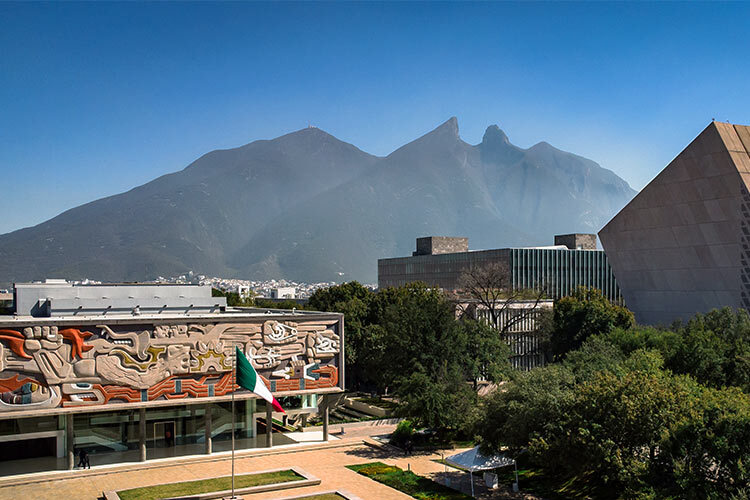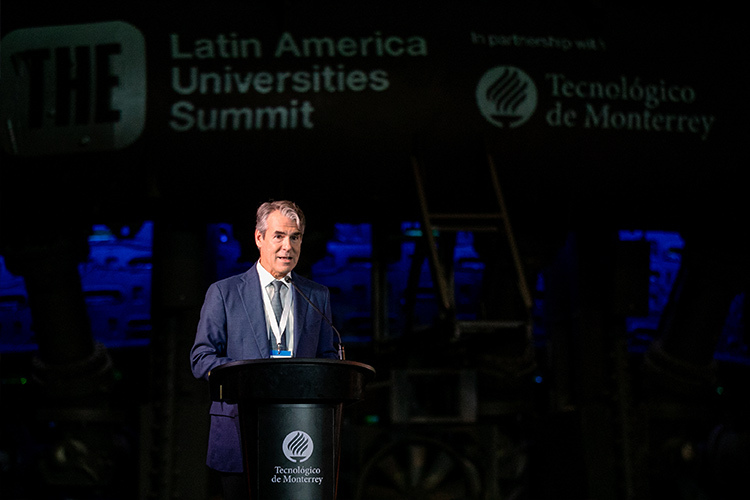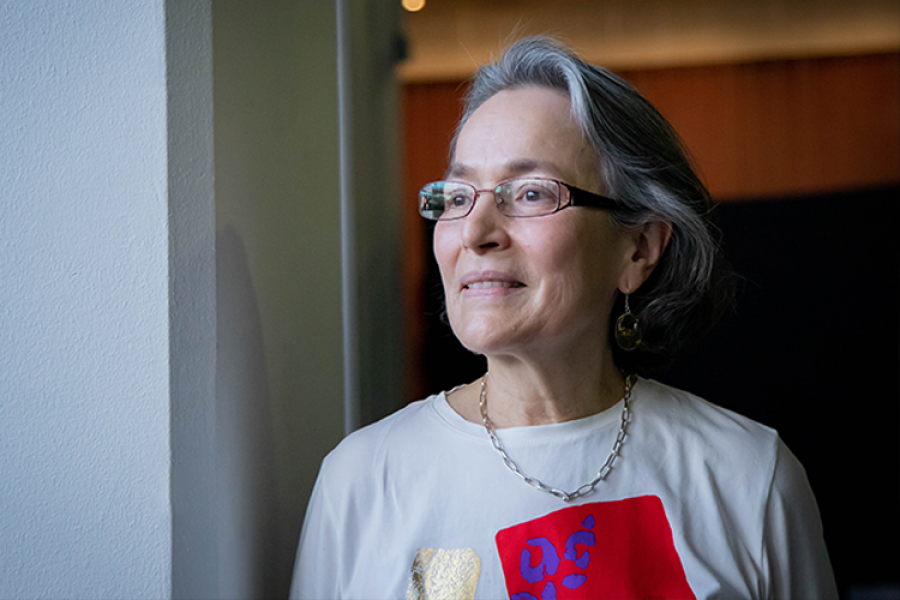The collaboration between industry and academia is a key aspect to promote technological progress and innovation in human societies, as well as being able to translate science and knowledge into actions, products or infrastructure that solve the real problems that populations face.
However, despite the fact that this relationship is known to be beneficial for the development of humanity, in Latin America this link is not as strong as it could be. Finding strategies to strengthen it was the main focus of the talk Academy-industry partnerships: increasing engagement and research impact, held during the event THE Latin America Universities Summit in 2023.
The talk was moderated by Abraham Tijerina Priego, Leader of Business development leader for outreach strategy at Tec de Monterrey, and included the participation of Arturo Cherbowski, Executive Director of Santander Universities, Iván Rivas, Economy secretary of Nuevo León and Ernesto Félix, Vice President of Operations and Technology at Cemex.
From their perspective, each one of them contributed to the discussion. “It is no accident that we are the guests on this panel, the three of us represent success stories,” said Cherbowski.
Collaboration between industry and academia
Throughout the talk, the participants explored the questions asked by Tijerina-Priego, discussing ideas and giving examples of how industry and academia have collaborated successfully.
According to Rivas, one of Nuevo León’s greatest strengths is its human capital. “We are graduating more than 50,000 engineers and scientists each year, more than 20,000 technicians, and we are receiving more than 100,000 people from the outside looking for a job,” he said.
Historically, the state has excelled in industry and manufacturing, however, the current government seeks to strengthen its performance in areas such as information technology, artificial intelligence, cybersecurity, and mobility. Universities have been key in moving towards this goal.
Through his leadership of Santander Universities, Cherbowski has realized that universities need to make a more significant effort to make their teaching programs more flexible and give their students the skills and competencies that the industry needs.
For him, there is no single university that can handle all the problems we face. “Instead of seeing each other as competitors, they have to start collaborating, beyond research, in actual human capital coordination.”
On the other hand, regarding the industry, he points out that it has been slow in being able to explain to students and universities what the specific skills and competencies they are looking for, beyond the generic profiles of scientists, engineers, or technicians they look for. “They still don’t know how to explain these needs,” he expressed.
From Félix’s perspective, the keys to a good collaboration between industry and academia are three things: “We need to be present, we need to be open and we need to be close”. This has led Cemex to seek collaborations with universities in the places where they are looking to set up a plant, such as Mexico, Cairo, the United Kingdom, and the United States.
Currently, the biggest challenge the company faces is to continue developing its main products −cement and concrete− in a sustainable manner. To achieve this, they have clearly seen that they need alliances and innovation, something in which the academy is key.
Bridging the gap
For Rivas, it is necessary to “close the gap between what the universities are bringing forward and what the industry is needing”, which is why it fills him with hope to know that universities such as Tec de Monterrey have updated their study plans to add re-skilling processes at the end of their courses.
Cherbowski agreed with Rivas and stressed that it is also essential to understand how big the gap is between industry and academia and what characterizes it in Latin America. “The data is still unknown,” he said.
Furthermore, what is needed is a real cultural change where the perspective we have on universities is updated and a sense of self-criticism is strengthened, seeking to make universities more inclusive and diverse, as well as helping them focus on current problems.
“What societies need is not what they needed 50 years ago when many of these programs were designed,” he emphasized. In addition, he pointed out that more capital needs to be invested to establish linking programs between universities and the private sector.
Lastly, he reminded attendees that not all universities are as robust as Tec de Monterrey or Massachusetts Institute of Technology (MIT). Higher education around the world is highly unequal, however, this heterogeneity is a strength and not a flaw, it must be used to our advantage to find different skills, abilities, and perspectives that enrich the solutions provided by the industry.
Something that Félix has observed is that, unlike other countries, in Mexico and Latin America, the investment of public funds in the research necessary to make industries, such as Cemex, sustainable is almost zero.
“Regarding sustainability, in the industry we no longer have time, we have to do it now,” he said. He stressed that public and private universities will be essential to achieving the environmental goals of this era.
To conclude, Rivas used the state of Nuevo León as an example that collaboration between the private sector, universities, and the government can work. “The industry brings to the table the problems to be solved, the universities come up with the solution and the government implements the public policies to make these solutions possible,” he explained.
For him and the rest of the participants, giving societies what they need to live fulfilling and dignified lives will depend to a large extent on the cooperation between these three areas.















